Mi sono tenuta per ultimo il sito archeologico che mi è piaciuto di più, Uxmal. Parlando di Uxmal però bisogna nominare anche Kabah, che era una cittadina prevalentemente militare e in cui comunque vivevano solo membri della classe dominante, collegata a Uxmal da una strada rialzata (sacbè). Kabah fa parte della zona dello stile architettonico puuc. Il suo edificio più importante è il palazzo delle maschere, completamente ricoperto da centinaia di rappresentazioni del volto del dio della pioggia Chaac (prima foto). Ho trovato notevoli anche le statue sulla facciata occidentale del palazzo (seconda foto) e la ricostruzione di un pozzo tradizionale (prima foto).
I've kept as the last the archaeological site I liked more, Uxmal. Speaking of Uxmal we must also mention Kabah, which was a primarily military town where only members of the ruling class lived, which is connected to Uxmal by a causeway (Sacbe). Kabah is part of the area of the Puuc architectural style. Its most important building is the palace of the masks, completely covered with hundreds of representations of the face of the rain god Chaac (first photo). I found also remarkable the statues on the west front of the building (second picture) and the reconstruction of a traditional well (first photo).
Uxmal...bè, Uxmal ha troppe cose fighe per nominarle tutte, ma farò del mio meglio.
Per prima cosa pare fosse il centro "universitario" in cui i figli degli esponenti delle classi alte di varie città venivano mandati a studiare, teoria che smentisce l'ipotesi che le città stato maya fossero sempre e tutte in conflitto le une con le altre. Raggiunse il suo massimo splendore nel periodo classico (che va dal 317 al 987) e iniziò a declinare nel 900.
La piramide dell'Indovino è l'unica di forma ovoidale trovata finora. Come per quella di Chichen Itza, l'acustica è strutturata in modo che battendo le mani davanti alla scalinata si sente il verso del queztal, un uccello sacro.
Uxmal ... well, Uxmal has too many cool things to name them all, but I'll do my best.
First, it seems it was an "university" center where the children of members of the upper classes of various cities were sent to study, a theory which contradicts the hypothesis that the Mayan city-state were always and all in conflict with each other. It reached its peak in the classical period (ranging from 317 to 987), and began to decline in 900.
The pyramid of the Magician is the only ovoid shaped one found so far. As for that of Chichen Itza, the acoustics are structured so that clapping in front of the stairs you hear the cry of queztal, a sacred bird.
Il cosiddetto "quadrilatero delle monache", così chiamato perché i conquistadores pensavano erroneamente che fosse un convento, è una piazza contornata da quattro edifici, sulle cui facciate ci sono decorazioni con significati legati al calendario e alle credenze religiose.
The so-called "nunnery quadrangle", so named because the conquistadors erroneously thought it was a convent, is a square surrounded by four buildings, whose facades' decorations have meanings related to the calendar and the religious beliefs.
Il sito ospita un'altra piramide, chiamata "la gran piramife", che non è bella come quella dell'indovino, ma su cui si può salire.
Dalla cima si può godere di una vista strepitosa (in foto): visto che lo Yucatan è piatto si può vedere intorno per chilometri e sembra di essere in cima al mondo, un mondo verdissimo, immerso nella vegetazione subtropicale! E' un panorama di una bellezza che fa girare la testa.
In foto vedete "la colombaia" una struttura ancora parzialmente sommersa dalla vegetazione.
The site hosts another pyramid, called "the great piramid", which is not as beautiful as the one of the Magician, but that you can climb.
From the top you can enjoy a breathtaking view (pictured): as Yucatan is flat you can see for miles around and it seems to be on top of the world, a very green world, covered by subtropical vegetation! It's a panorama so beautiful that makes your head spin.
In the photo you see the "dovecote" a ruin still partially submerged by the vegetation.
Notevole è anche la Casa delle Tartarughe, un edificio che deve il suo nome alle tartarughe che ne decorano il cornicione superiore. Le tartarughe nella visione del mondo Maya erano associate al dio della pioggia Chaac. Infatti per invocare la pioggia si mettevano tartarughe girate sul dorso in delle buche, perché pregassero il dio di far piovere in modo da poterne uscire.
A Uxmal c'è anche un campo del gioco della pelota più piccolo e meno bello di quello di Chichen Itza, nonché molte rovine non ancora riscoperte come "la colombaia". Il Messico ne è pieno, ma purtroppo, nonostante gli investimenti del governo e i soldi derivati dal turismo, disseppellirle tutte e mantenerle in buone condizioni e visitabili sarebbe una spesa insostenibile.
The House of the Turtles, a building that takes its name from the turtles that decorate the upper cornice, is also remarcable. Turtles in the vision of the Mayan world were associated with the rain god Chaac. In fact, to invoke rain theu put turtles turned on their backs into a hole, to make them pray the god to make it rain so they can go out.
At Uxmal there is also a ballgame field, smaller and less beautiful than that of Chichen Itza, as well as many ruins that haven't been rediscovered yet as the "dovecote". Mexico is full of them, but unfortunately, despite the government's investment and the money derived from tourism, to dig keep in good condition them all as they can be visited would be unsustainable.

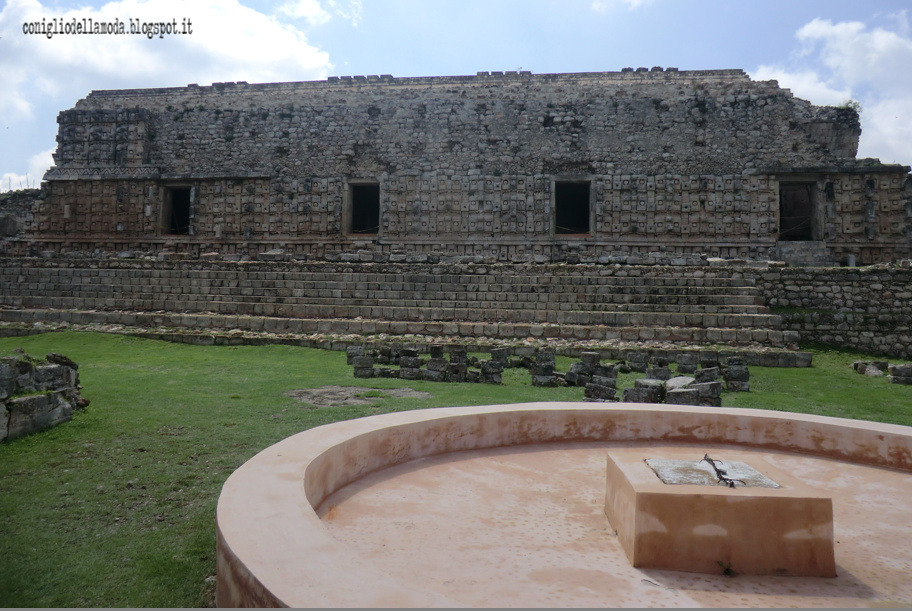
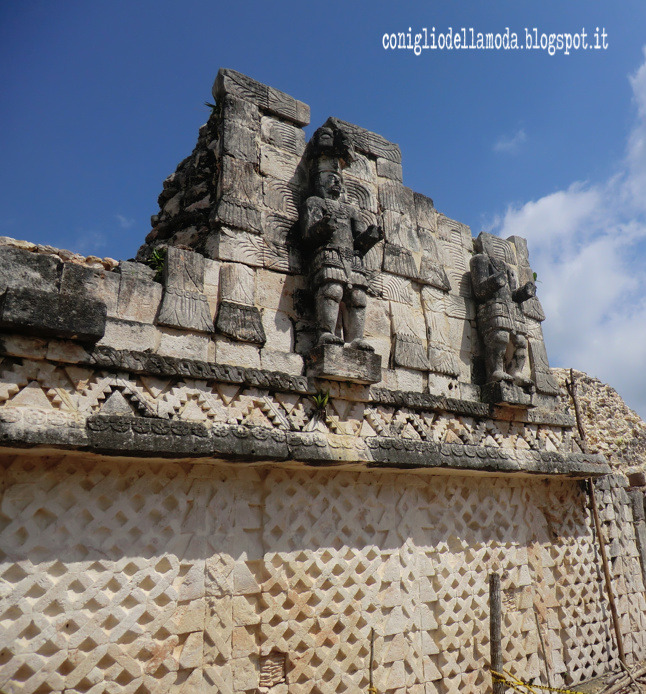
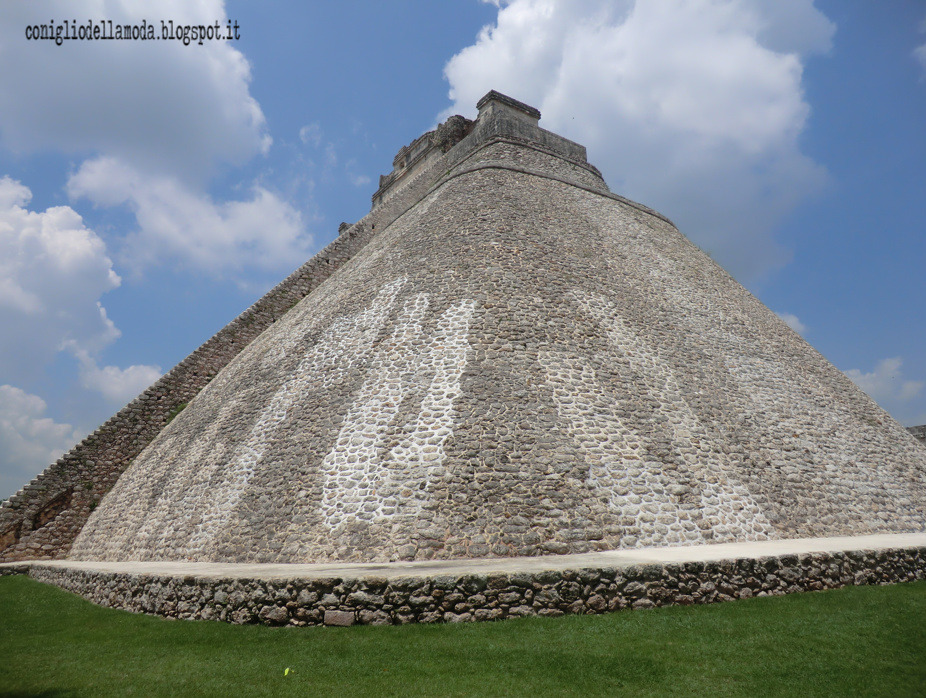
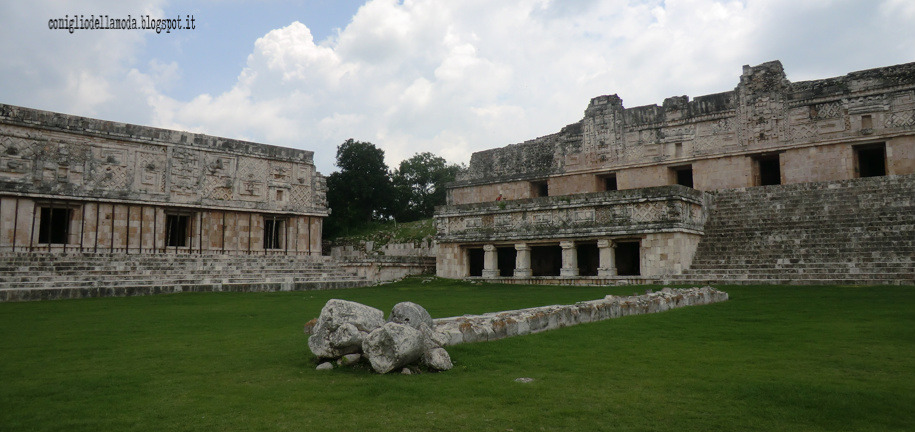

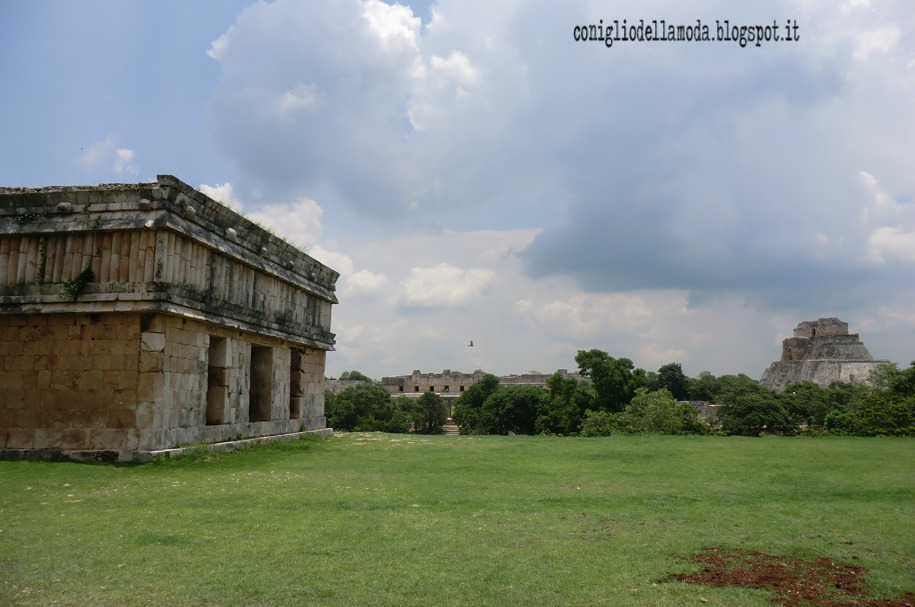
10 commenti:
Povere tarte!!!! @_@
Che bei posti *___*
Solo gli spagnoli potevano pensare ci fosse un convento in mezzo al verde e costruito dai Maya XD
@Nyu: già...i Maya sono stati fortunati a perdere certe usanze prima di incappare nei cecchini del WWF
@Lit: sììì stupendi!!!
Bè gli spagnoli dell'epoca non hanno dato prova di grande apertura mentale su tante cose XD
Non conoscevo questo sito, è davvero affascinante. Lo aggiungo tra le cose da vedere assolutamente durante un eventuale viaggio in Messico, non me lo posso perdere.
Bellissimo sito! Il mio ragazzo è stato in Messico 15 anni fa e voleva tornarci, chissà che non riusciamo a farci un viaggetto, intanto mi guardo le tue belle foto!
@Elena: neppure io lo conoscevo, e dire che mi ritenevo un'appassionata ^^' Aggiungilo assolutamente!!!
@Scarabocchio: fra breve recensirò l'agenzia, magari vi viene utile, però credo che convenga notevolmente farsela da soli.
Sto leggendo tutti i tuoi post sul Messico, a parte i complimenti per le foto che ti ho già fatto, tutto il post è veramente interessantissimo, tra l'altro il Messico io lo conosco veramente molto poco perché mi sono sempre interessata al NordEuropa senza mai considerare certe nazioni che invece ne hanno di cose interessanti! Bravissima!
@Fiona: grazie ancora, mi fa piacere che le mie foto vengano apprezzate e ancora di più i miei post!!! *_____*
Io sono nella stessa situazione al contrario, visto che non mi sono mai interessata al nord europa
Che meraviglia!
@Lavinia: sììì assolutamente *_________*
Posta un commento